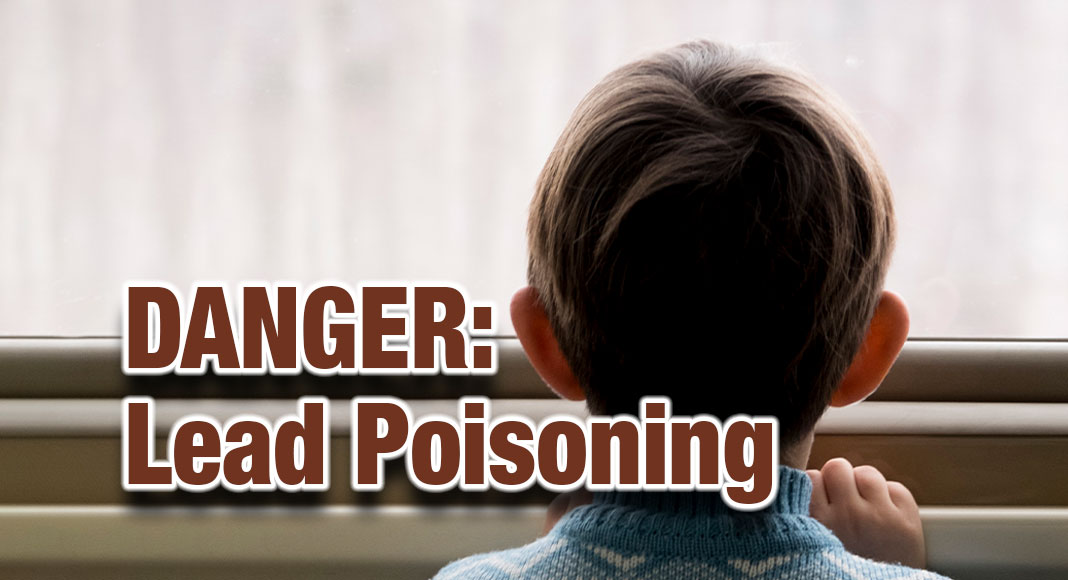
Mega Doctor News
The harmful effects of childhood lead exposure can be prevented. The key is to keep children from coming in contact with lead. Learn how to prevent children’s exposure to lead.
Lead in paint, soil, air, or water is invisible to the naked eye and has no smell. No safe blood lead level in children has been identified.
Exposure to lead can seriously harm a child’s health, including
- Damage to the brain and nervous system
- Slowed growth and development
- Learning and behavior problems
- Hearing and speech problems
There are many ways that parents can reduce children’s exposure to lead before they are harmed. Lead hazards in a child’s environment must be identified and controlled or removed safely.
Common Ways Children Can Come in Contact with Lead
Children may be exposed to lead through contact with paint chips and dust from lead paint in buildings and homes built before 1978. These paint chips and dust particles may land on windowsills, the floor, outdoor soil, toys, trinkets, or their fingers. Young children can be exposed to lead when they put their hands or other objects, which may be contaminated with lead dust, into their mouths as a part of their normal development.
Children can be exposed to lead if they swallow or breathe in chipped pieces of lead paint or lead dust. For example, old or worn lead paint peels and cracks, and lead dust settles inside and around homes. This occurs on doors, windowsills, and wells.
In addition, lead can be scattered when paint is disturbed in homes or buildings built before 1978 during the following activities:
- Building destruction or remodeling
- Paint removal
- Preparation of surfaces for repainting
Children can also be exposed by swallowing or breathing in soil contaminated with lead while playing outside, or when it is brought inside on shoes or clothes.
Lead paint or dust are not the only ways lead exposure can occur in children. Other sources include the following:
- Dust from soil contaminated with lead from leaded gasoline, aviation fuel, mining, or industries. Drinking water delivered through lead-based pipes, faucets, and plumbing fixtures
- Traditional medicines and cosmetics such as azarcon and greta, which are used for an upset stomach or indigestion in Hispanic communities
- Some candy and candy wrappers
- Consumer products such as toys, jewelry, antiques, and collectible items
- Lead-glazed pottery
Adults who encounter lead at work or from hobbies can unintentionally expose their family to lead dust.
Adults who are exposed to lead in their workplace or from hobbies can prevent take-home lead exposure by:
- Changing clothes and shoes before leaving work
- Showering before leaving work
- Avoiding taking contaminated clothing and shoes home. If clothing is brought home, store work clothing in a closed plastic bag and wash work clothing separately
Prevent Childhood Lead Poisoning
No safe level of lead in children has been identified. Even low levels of lead in blood can hurt a child’s ability to learn, pay attention, and do well in school.
The good news is that childhood lead poisoning is preventable. Talk to a Healthcare Provider if You Think Your Child Has Been in Contact with Lead
The Documents below will be very helpful in keeping you and your children safe:
If you think your child has been in contact with lead, contact your child’s healthcare provider. He or she can help you decide whether to have your child tested.
A blood lead test is the best way to find out if your child has been exposed to lead. Most children with lead in their blood have no symptoms.
If your child has been exposed to lead, your child’s healthcare provider can recommend needed services.
See frequently asked questions about lead and possible lead exposure.
For more information on sources of lead exposure and prevention tips
- Visit our Sources of Lead Exposure and Lead Poisoning Prevention web pages.
- Call CDC-INFO at 1-800-CDC-INFO (232-4636).
- View the NLPPW Partner Information Toolkit [PDF – 8.6 MB] created by CDC and our federal partners to encourage information sharing, collaboration, and promotion of lead poisoning prevention activities.












